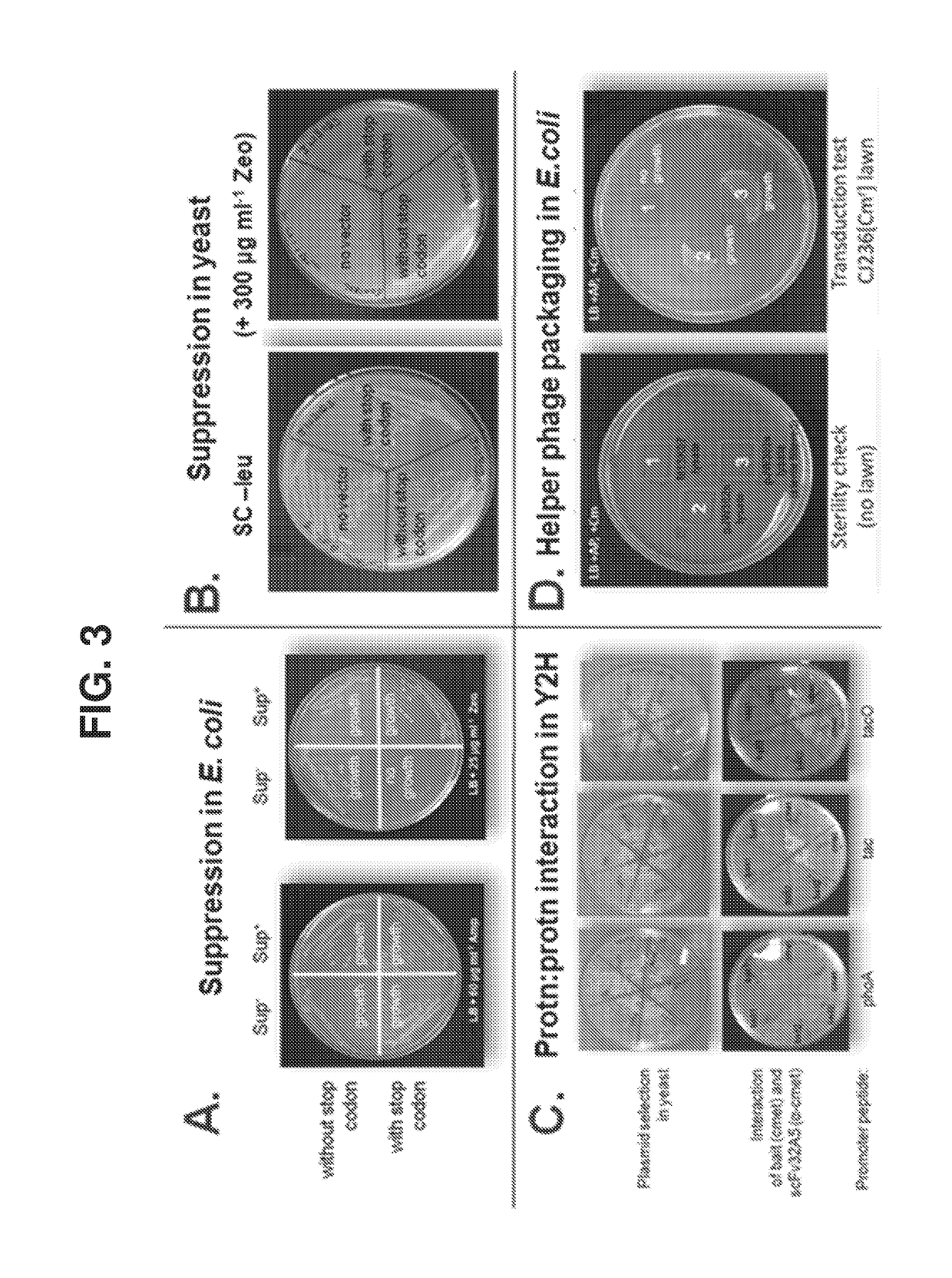Methods of identifying and validating affinity reagents
a technology of affinity reagents and affinity reagents, which is applied in the field of identification and validation of affinity reagents, can solve the problems of low throughput of methods, high cost, time-consuming, etc., and achieves the effect of higher binding affinity
- Summary
- Abstract
- Description
- Claims
- Application Information
AI Technical Summary
Benefits of technology
Problems solved by technology
Method used
Image
Examples
example 1
Materials and Methods
Bacterial Strains and Vectors
[0094]The E. coli strain, TG1 [F′ (traD36, proAB+ laclq, lacZΔM15), supE, thi-1, Δ(lac-proAB), Δ(mcrB-hsdSM)5, (rK−mK−)], purchased from Lucigen (Middleton, Wis.), was used to develop the E. coli strain AXE688, by transforming TG1 with the pAX1492 plasmid that encodes the Eco29kl RM operon. The E. coli strain CJ236 (FΔ(HinDIII)::cat(Tra+, Pil+, CamR) / ung-1, relA1, dut-1, thi-1, spoT1, mcrA) was purchased from New England BioLabs (NEB; Waverly, Mass.). Electrocompetent and chemically competent strains will be made following NEB protocols. The template plasmids for AXM mutagenesis will be derivatives of the phagemid pCH103, with the same scFv template genetically fused to the coat protein gp3 of bacteriophage M13. Each of the 6 CDRs of this template scFv will be modified to contain both opal (TGA) stop codons and Eco29kl restriction endonuclease recognition sites. In this template, non-recombinant clones are non-functional with respect...
example 2
Overview of Antibody Framework and Library Design
[0102]We have identified a constant framework scFv-based Ab library encoding an NNK codon (see, e.g., Benhar, Expert Opin Biol Ther. 7(5):763-79, 2007; Chan et al., Int Immunol. 26(12):649-657, 2014; Miersch et al., Methods. 57(4):486-98, 2012; Mondon et al., Front Biosci. 13:1117-29, 2008; Tohidkia et al, J Drug Target. 20(3):195-208, 2012) at 18 different positions within the six complementarity determining regions (CDRs) (Mandrup et al., PLoS One. 8(10):e76834, 2013). The B2A framework for the library identified and used in these experiments was selected based on its capacity for functionality in both phage display (φD), when fused to the M13 gp3 protein, and in yeast 2-hybrid (Y2H), when fused to the activation domain. Notably, although the rAb-generating platform of the present invention is currently used with single-chain variable fragments (scFvs), the platform is readily applicable to other applications, such as, for example, ...
example 3
The pCH103 Cloning Vector System can Eliminate the Need for Subcloning Proteins for Testing in φD, Yeast Two-Hybrid, and E. coli Protein Expression
[0106]Technologies for Y2H and φD can be leveraged to develop a selectable and scalable system to obtain, identify, and affinity mature antibodies in an extremely high throughput and cost effective manner. A bi-functional vector system (pCH103) has been constructed with the capability to function in both Y2H and E. coli-based φD methods (FIG. 2). In E. coli, the protein expressed will depend on the E. coli genotype. Major features of the pCH103 vector system, and benefits thereof, are described below.
pCH103 Vector Design
[0107]As shown in FIG. 2A, an amber stop codon is inserted between the protein of interest (in this case, an scFv) and gp3. As a result, in non-suppressing E. coli, the expressed protein will be the scFv by itself. In suppressing strains of E. coli, the scFv will instead be fused to the gp3 protein. In yeast, the scFv will...
PUM
| Property | Measurement | Unit |
|---|---|---|
| Fraction | aaaaa | aaaaa |
| Length | aaaaa | aaaaa |
| Solubility (mass) | aaaaa | aaaaa |
Abstract
Description
Claims
Application Information
 Login to View More
Login to View More - R&D
- Intellectual Property
- Life Sciences
- Materials
- Tech Scout
- Unparalleled Data Quality
- Higher Quality Content
- 60% Fewer Hallucinations
Browse by: Latest US Patents, China's latest patents, Technical Efficacy Thesaurus, Application Domain, Technology Topic, Popular Technical Reports.
© 2025 PatSnap. All rights reserved.Legal|Privacy policy|Modern Slavery Act Transparency Statement|Sitemap|About US| Contact US: help@patsnap.com



